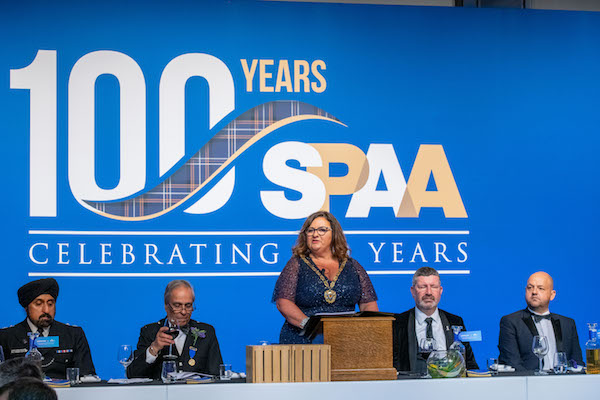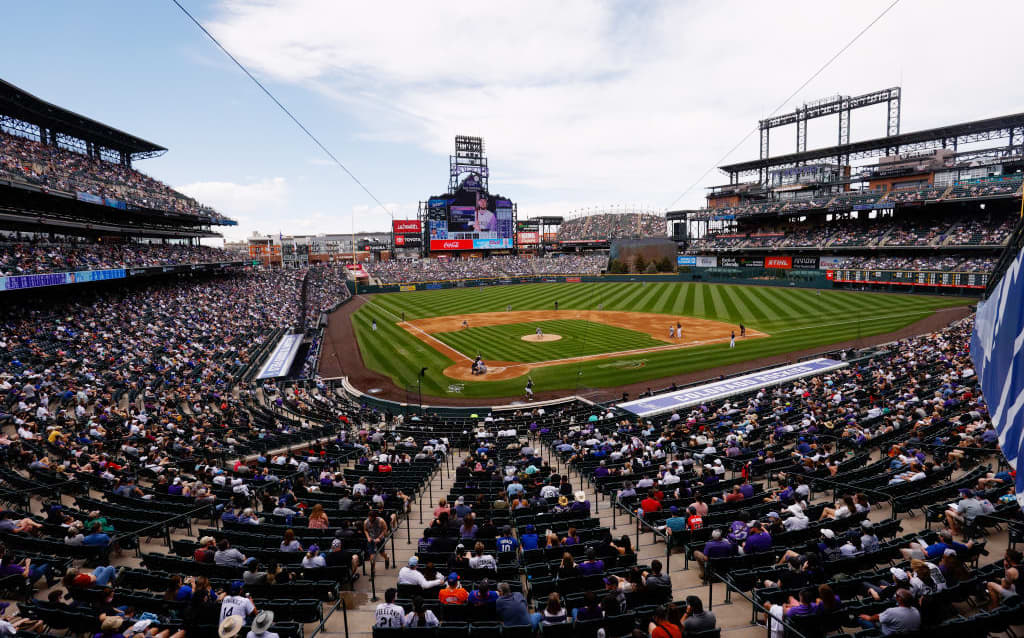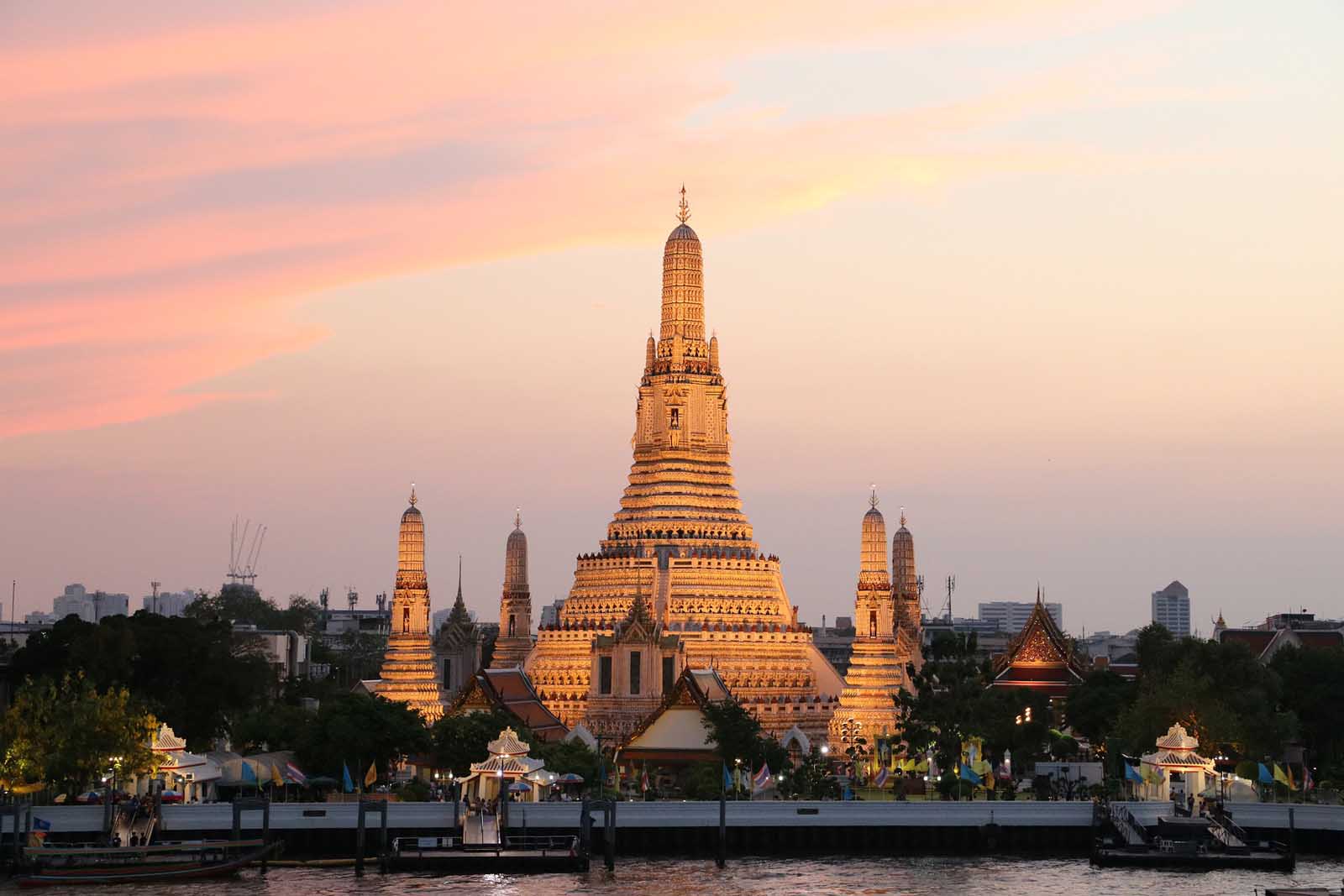Ultimate Guide To Wat Arun – Bangkok’s Famous Temple Of Dawn
Wat Arun Ratchawararam Ratchawaramahawihan or quite simply Wat Arun, is a sacred Buddhist temple of high significance in Bangkok. Named after the Hindu God Aruna, a personification of the rising sun, and situated in the Bangkok Yai district, it...
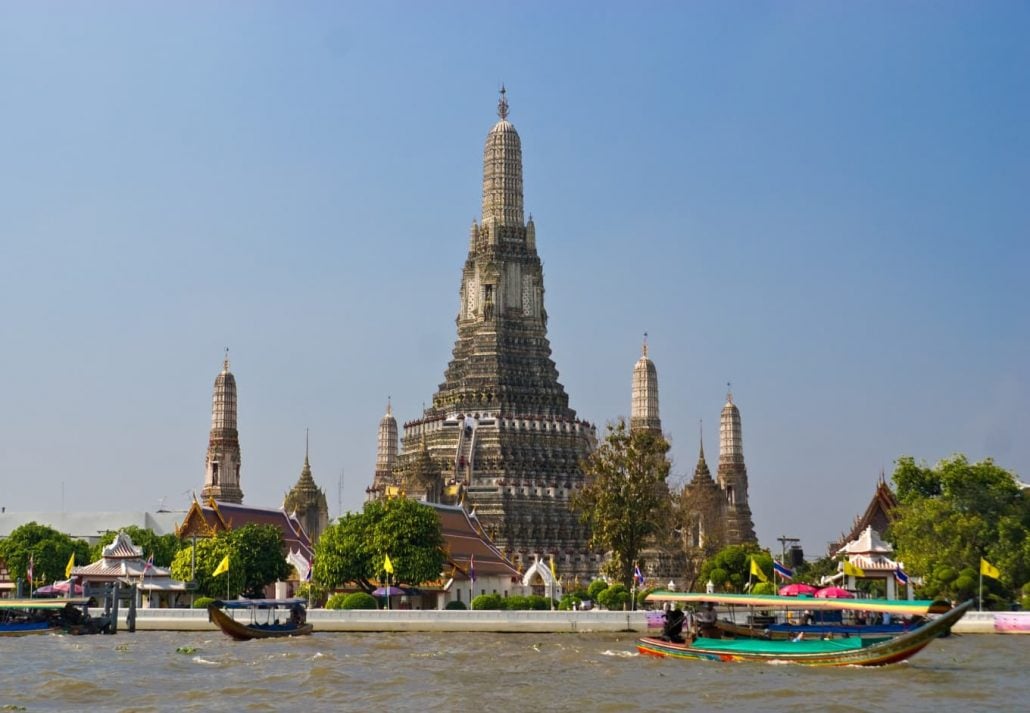
Wat Arun Ratchawararam Ratchawaramahawihan or quite simply Wat Arun, is a sacred Buddhist temple of high significance in Bangkok. Named after the Hindu God Aruna, a personification of the rising sun, and situated in the Bangkok Yai district, it is one of the most stunning temples to have ever existed. The Temple of Dawn stands majestically over the Chao Phraya River, directly opposite Wat Pho, and reflects the sunlight beautifully, especially during sunrise, hence the nickname.
Visiting Wat Arun is like taking a glimpse into the rich history and culture of Thailand. The temple is renowned for its impressive architecture and fine craftsmanship and is a must-visit when you’re in Bangkok. Let’s delve deeper to unveil its mystery and understand what makes the attraction so compelling!
Wat Arun – At A Glance

| 📌 Location | On the west bank of the Chao Phraya River |
| 🎟️ Tickets | THB 100 |
| ⏰ Timings | Daily from 8 AM – 6 PM |
| 🚗 Getting There | Hop aboard the ferry from Tien Pier (5 AM to 9 PM) |
| 🔥 Best Time To Visit | At dawn or during sunset |
History of Wat Arun
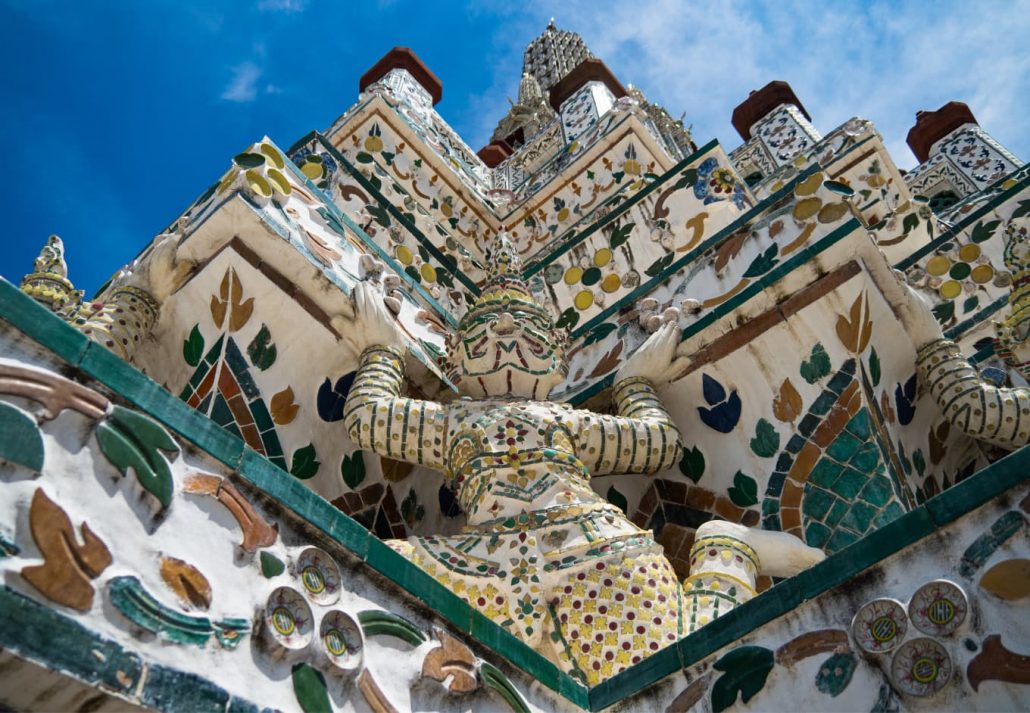
The site of Wat Arun has been a place of worship since at least the late 16th century. Initially known as Wat Makok, back in the Ayutthaya period, it was located on the banks of the Khlong Lat River and held little historical significance until the late 18th century.
King Taksin transformed the temple’s destiny in 1767. Fleeing the Burmese army, he stumbled upon the site at dawn and established it as his royal base. He then had the temple renovated and renamed it Wat Chaeng. Its importance escalated when it became the temporary home of the sacred Emerald Buddha, a national relic brought from Laos.
When Bangkok was declared the capital, the temple was renamed Wat Arun by King Rama II, who also initiated the expansion of its central prang. Completed under Rama III, this iconic spire remains the temple’s most striking feature, largely untouched since its most extensive restoration work in 2017.
Things to See at Wat Arun
The Ordination Hall
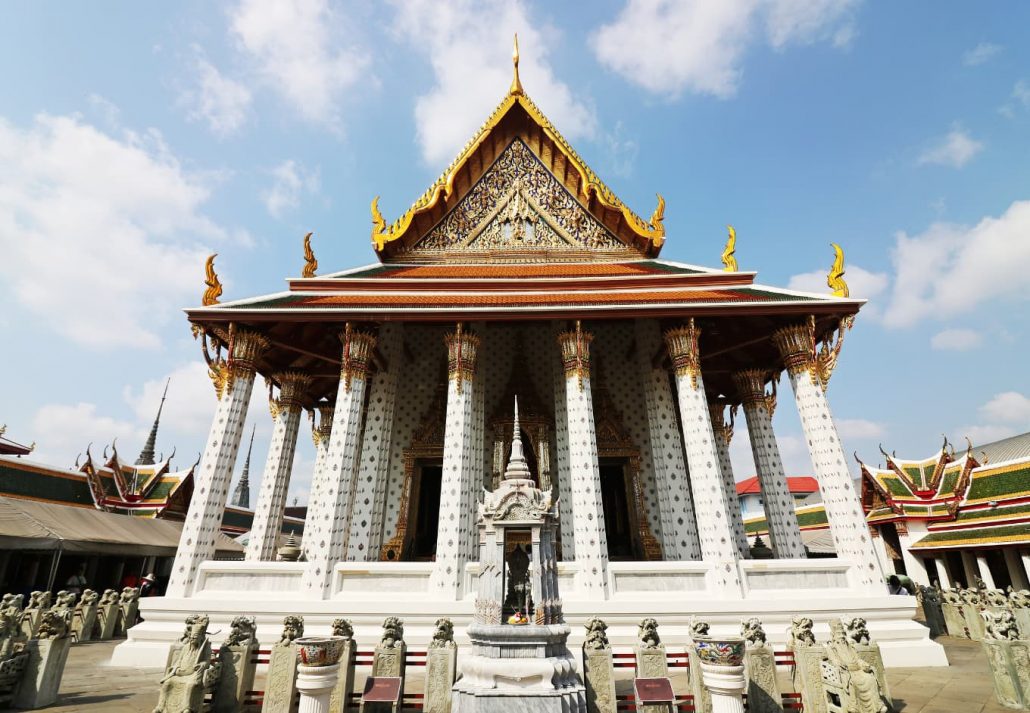
The heart of the compound, the ordination hall, houses a remarkable Niramitr Buddha image attributed to the design of King Rama II. Its walls are adorned with exquisite murals depicting Prince Siddhartha’s transformative encounters with life’s impermanence, events that inspired his renunciation of worldly pursuits.
For breathtaking photos of Wat Arun, head to this iconic arched gateway crowned with splendor. Flanked by ornate statues of the Yakshas, this is the pathway to the monks’ sanctuary. Arrive early to savor the solitude and capture the perfect shot.
Tower Phra Prang
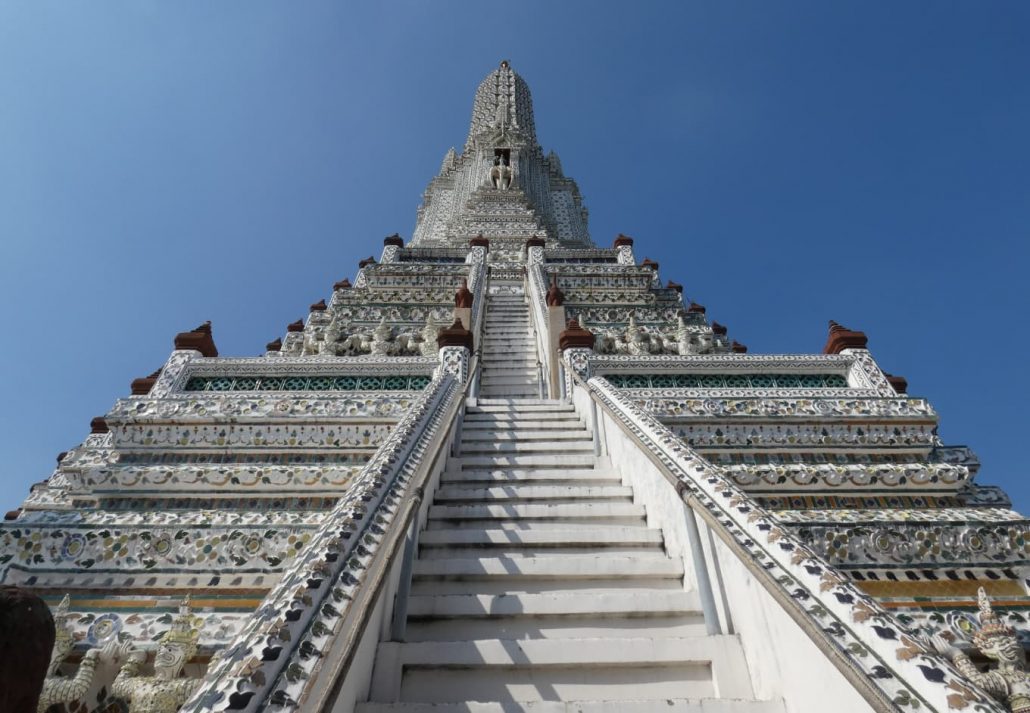
A distinct and central feature of Wat Arun Temple is the 82m-high imposing spire. This towering central spire or prang is believed to represent Mount Meru, the sacred cosmic mountain in Hindu mythology. Its tiered structure, resembling a celestial staircase, symbolizes the ascent to heaven.
Surrounding the prang, three tiers of statues depict a cosmological hierarchy in Buddhist iconography: demons at the base representing hell, monkeys in the middle symbolizing earth, and angels at the top representing heaven. While influenced by Khmer architecture, the prang is distinctly Thai Rattanakosin in style, characterized by its slender profile, height, and corner indentations.
Adorned with countless ceramic tiles, colored glass, and seashells, and topped with a seven-pronged trident, known as the “Trident of Shiva,” the main spire showcases intricate patterns. A winding staircase ascends one-third of the structure, offering a breathtaking view of the winding Chao Phraya River, the Grand Palace, and Wat Pho from its summit.
The Main Temple
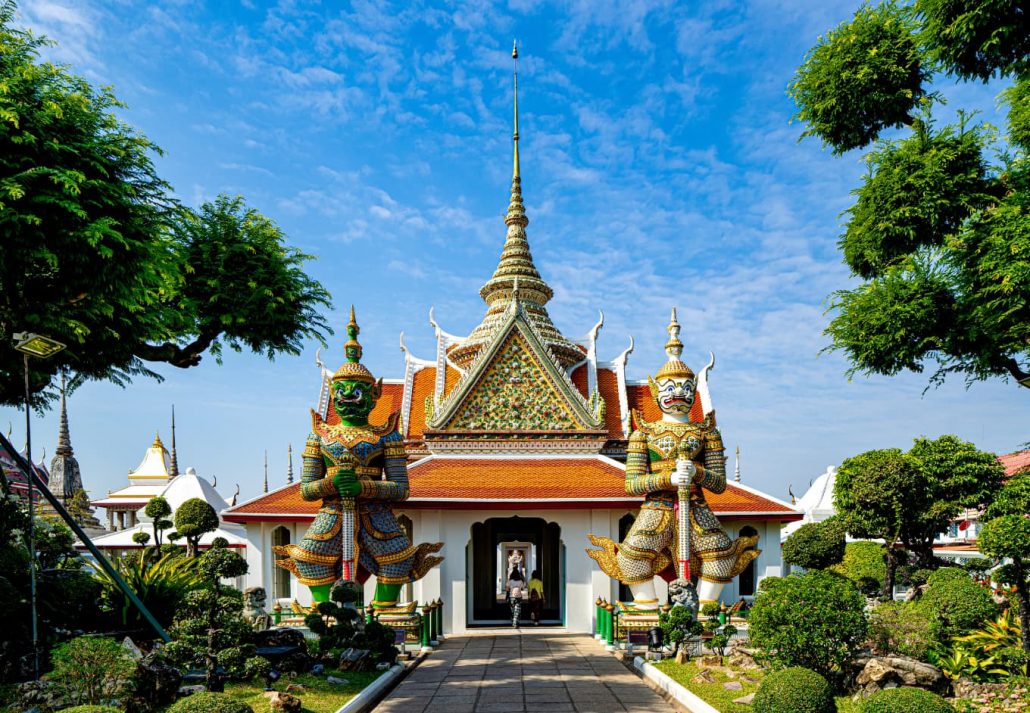
Wat Arun’s holiest sanctuary is undeniably its most captivating area. Be particularly enchanted by the stunning corridors adorned with Buddha statues. The temple’s photogenic allure is undeniable, making it a top Instagram spot in Bangkok. Beyond its beauty, the marble courtyard is a highlight, featuring intricate Chinese stone carvings of lions, dragons, and mythical warriors.
Hotels Near Wat Arun
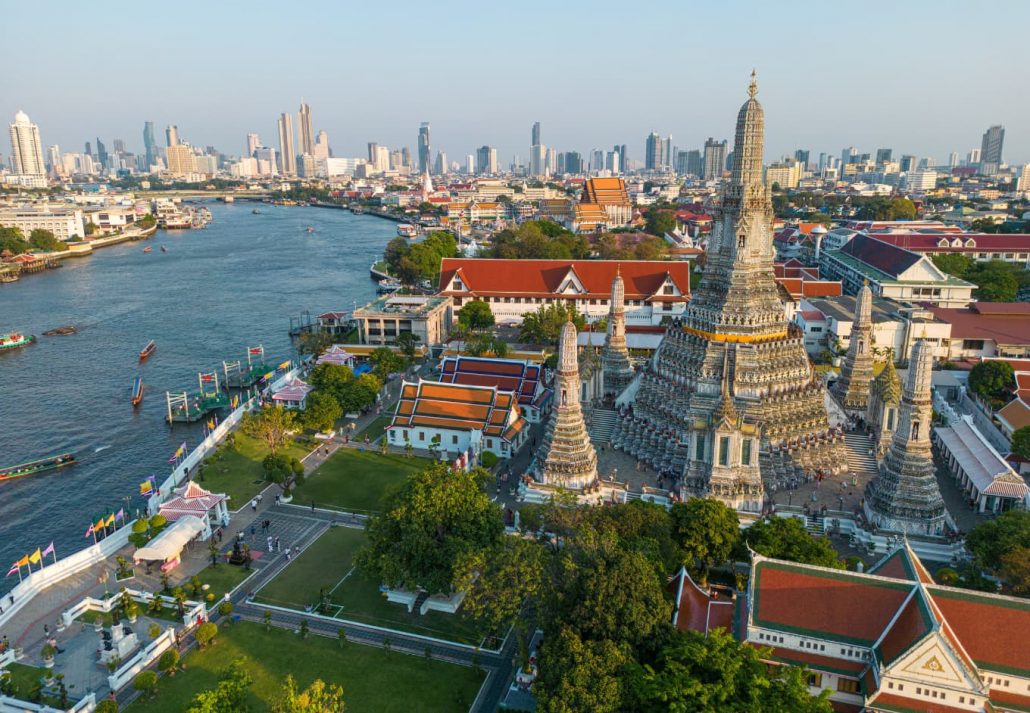
Arun Residence is a charming, multi-story wooden house offering stunning views of Wat Arun from its prime riverfront location. Its seven rooms blend comfort with style, and the top-floor suites, complete with private balconies, are particularly delightful. Shared spaces include a cozy library, a rooftop bar, and a restaurant, creating a welcoming atmosphere.
For a more contemporary experience, consider Sala Rattanakosin. This sleek hotel boasts modern rooms with open-plan bathrooms and expansive river views of Wat Arun. While intimate in size, the rooms cater to the fashion-conscious traveler.
The Royal Rattanakosin Hotel is a budget-friendly option conveniently located just 1.8 kilometers from the iconic Temple of Dawn and near the bustling Main Street Hefang. While the rooms may be compact, the hotel boasts cleanliness and excellent service. To ensure availability, book your stay in advance before jetting off to Thailand.
Frequently Asked Questions
Why is Wat Arun famous?
Wat Arun is renowned for its stunning architecture, particularly its central prang adorned with colorful porcelain tiles. It’s often called the “Temple of Dawn” due to its beautiful appearance at sunrise.
What is the best time to visit Wat Arun?
For a truly unforgettable experience, visit Wat Arun early morning at sunrise or sunset when the temple’s spires are bathed in golden light, creating a pearly iridescence that is absolutely stunning to witness.
Is there a dress code to enter Wat Arun?
Wat Arun is a sacred Buddhist temple, so dress appropriately. Visitors must wear trousers or long skirts and tops that cover the shoulders. Sheer clothing is not permitted. For those not dressed suitably, sarongs can be rented at the entrance for 20 baht (plus a 100 baht deposit). Please note that shoes must be removed before entering certain areas of the temple.
What other sights are there to see near Wat Arun?
Several other attractions are nearby, including the Grand Palace, Wat Pho, and the bustling Chinatown.

 Hollif
Hollif 








